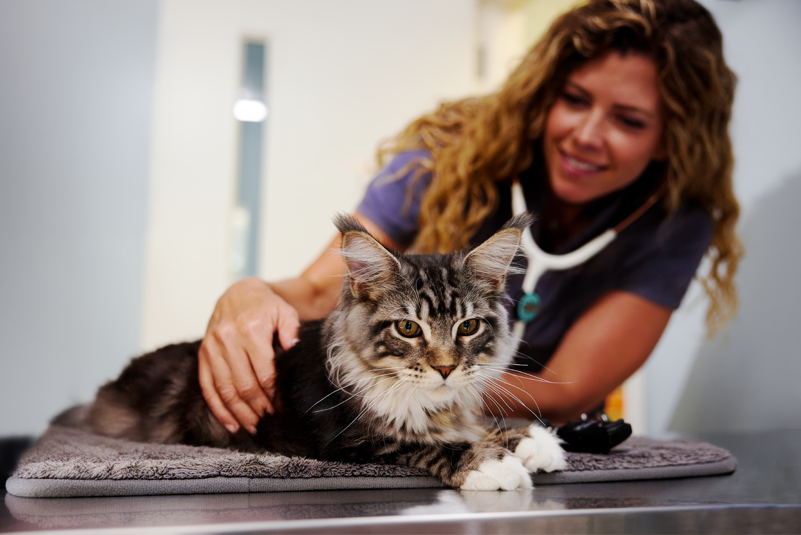Healthy Pets, Healthy Bottom Line: A Win-Win with Preventive Care

By Jennifer Lopez, DVM, MBA, Antech Professional Services Veterinarian
As a veterinarian who’s spent countless years both in the exam room as a technician and in the medical director chair, I’ve heard the pitch for preventive care a thousand times: “Wellness bloodwork increases compliance and revenue. Let’s have a promotion this month!” Or “It’s summertime, let’s make sure we focus on prevention and preventatives.”
And yes, on paper, preventive medicine is a proven revenue driver. It makes sense that the more diagnostics done in the veterinary clinic, the more potential for revenue growth with additional services. And that, in turn, can help us hire more support staff and even buy those fancy tools we all want for our practices.
Many veterinary consultants abide by the rule that diagnostic revenue should be at least 14-18% of total practice revenue for profitability. When you increase this one part of the business just 1-2% it can lead to huge opportunities in “hidden revenue streams”. We have all heard that quote by Benjamin Franklin saying that “an ounce of prevention is worth a pound of cure”. But let’s be honest, if you walk into your next team meeting and lead with that—meaning the dollar signs instead of the deeper purpose of your “why”—you will see eyes glazed over, distracted nods, and most likely, very little follow-through. Why? It’s because we’re not connecting the clinical what to the emotional why of our craft. And that disconnect is costing us more than compliance.
As veterinary professionals, we know the importance of wellness care—annual bloodwork, fecal testing, heartworm and tick screening, preventatives, and lifestyle-based vaccine schedules. We have so many organizations that provide guidelines on care and diagnostic testing in our field such as CAPC, AAHA, and AVMA. Those recommendations help us deliver ethical and applicable care for anything we might encounter in the exam room. I could recite to a client a ten-minute monologue laying out what I recommend on preventive care with kittens, puppies, adult, and geriatric pets without breaking a sweat or a crack in my voice. You probably can too.
When it comes to diagnostics, we understand why we say what we say. We see the patterns before clients do with their animals. And we know that there will be subtle organ changes on labs. We know why we chose that PCR instead of that fecal float and centrifugation to test for parasites, or why their cats need to be tested for heartworm yearly even if they don’t leave the house.
But do our clients know and understand this information? Many don’t.
AVMA put out a communication called “Chart of the Month” in February 2025 that stated that some pet owners may not perceive what “regular” means or understand the value of routine check-ups for their pets. How is this possible??! Our clients don’t live in lab values or reference ranges. They live in moments—weekend hikes, evening snuggles on the couch after a long and stressful day at work, and in family trips to the beach. When we focus our preventive pitch on “early detection” or “monitoring trends” or “baselines” without context, we sound abstract and cold. Even worse, when we pivot to “it’s cost-effective in the long run” or “a better bundled bang for your buck service,” we sound transactional or tongue-tied.
One of the most useful frameworks I have found in practice for re-structuring preventive care is spectrum of care. Thank you to Michelle Evason, Jason Stull, and others for “bringing sexy back” with this phrase. This one is definitely a win-win. Spectrum of care considers and acknowledges that all clients should have access to care, but “best practices” means different things to different people in different areas of the country. And that is just fine! The spectrum of care model focuses on evidence-based medicine and the ability for owners to choose based on their resources, their beliefs, and their decision-making styles.
When you weave preventive care in the spectrum of care model, you open the door to flexible, tailored medical recommendations. Personalized care plans you can even call them! You’re no longer pushing a “platinum tier” package. Clients are choosing what fits for them and for Fluffy. Maybe it’s a KeyScreen™ GI Parasite PCR test today and CBC the next visit. Maybe it’s just a tick-borne PCR panel for the Jindo dog who hikes the Catskills on the weekends.
Whatever it is, this model creates trust and a partnership with the client. Trust will then build compliance and loyalty to you and your practice teams. With that compliance brings better outcomes, enhances team efficiency, and increases practice valuation. This then continues to lead to further growth opportunities – think chronic care management.
How we teach our teams to speak wellness and incorporate spectrum of care conversations confidently and empathetically is foundational to success. It starts with education, but it’s not just product training and regurgitating that the test takes ten minutes to get results. It’s about mindset.
Let’s start with the “why”. “People don’t buy what you do, they buy why you do it.”
This is one of Simon Sinek’s most famous quotes from his business philosophy book: Start with Why: How Great Leaders Inspire Everyone to Take Action. If you haven’t read it, I highly recommend you do as soon as possible.
Instead of telling clients what we need to do, we need to communicate the benefit. Don’t just tell pet owners in your clinic: “We recommend annual heartworm and tick disease screening yearly.” Instead, say: “This quick test called trūRapid that just requires a couple drops of blood helps us catch tick borne diseases before they make your dog sick—so you can enjoy more adventures together without any surprise illnesses. Early detection keeps pets active, happy, and we both want you to have the best life with your pet.”
Clients want to know what’s in it for them and their pet when you recommend something. It’s not about the panel components or the lateral flow technology—it’s about peace of mind, longevity of life, security in their health, and personal connection. If your whole team is rooted in that why, their conversations with clients shift from transactional to transformational. That shift deepens relationships within the team, increases trust, and elevates your hospital’s culture, outcomes and yes, revenue.
Use real patient stories. We all have a case we can share and make the message real and tangible. Nothing lands like a moment where preventive medicine made the difference. Maybe that is your why? Let your LVTs, CSRs, and VAs see that they aren’t just “upselling” with the newest test that gives the most rebates back to the clinic—they are helping extend the lives of the pets they see.
Preventive care isn’t a sales metric—it’s a philosophy for your practice and the community that you serve. It’s our opportunity to meet pets and their families before they’re sick, establish a relationship with them and be able to intervene before it’s critical, keep families whole. It aligns everyone’s actions to be more meaningful. It’s my why.
Let’s stop pushing the next wellness promotion and start living it. What is your ‘why’?




